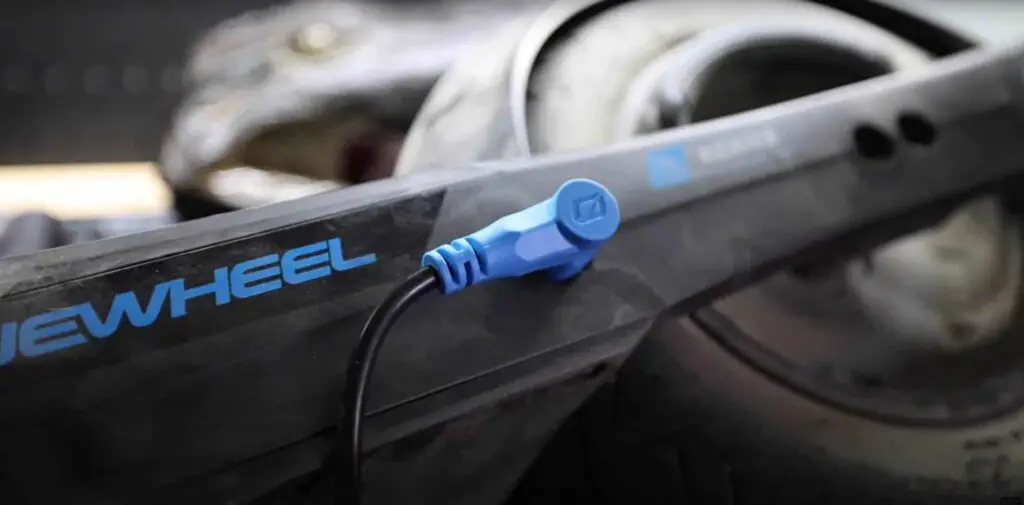
Released to the public in late October 2023, the Onewheel GT S-Series has become Future Motion’s flagship model, replacing the GT Onewheel. The GT S-Series retains the same design and profile dimensions but features a 113V output, a standard Performance treaded 7″ tire, new internals, and is adorned with Tiffany blue lettering.
The GT S-Series’s major improvement over the GT is power output (double the torque headroom) and a higher top speed of 25 mph (40km/h). You compromise approximately a 20% loss in range over the standard GT (16 to 25 mi) however you see a weight reduction of 2 lbs (33lbs) in return.
The GT S-Series makes a massive leap in performance over the GT. This has been one of the largest power increases to a board that Future Motion has issued. The GT S-Series comes with Digital Shaping 3.0 and Haptic Buzz standard.
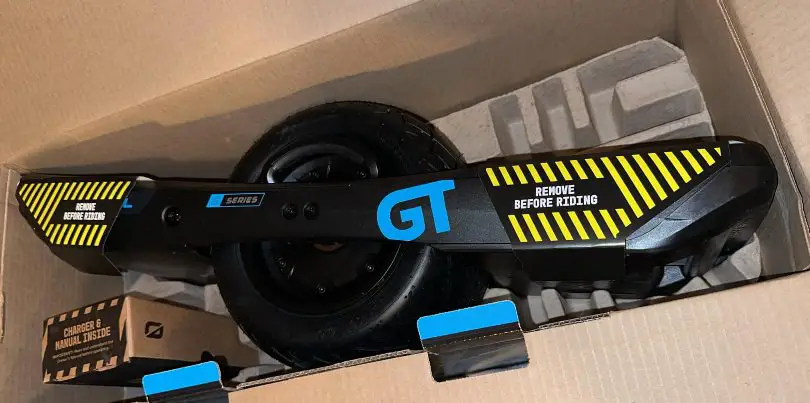
Onewheel GT S-Series (GTS) Specs:
| Hub Motor | S-Series Tuned Hupercore Hub Motor |
| Tire Dimensions | 11.5″ x 7″ – 6.5 – Performace Tire by Future Motion |
| Board Dimensions | 9.5″ × 11.5″ × 29″ / 24cm x 29.21cm x 74cm |
| Weight | 33 lbs / 15.0 kg |
| Battery | 437Wh NMC 27s1p 21700 Battery [113V Max] |
| Top Speed (mph / km/h) | 25 mph / 40 km/h (advertised*) |
| Peak Torque (Nm) | 31.3 Nm |
| Peak Motor Speed (RPM) | 1841 rpm |
| Peak Power Output (W) | 3913 W |
| Horsepower | 5.2 hp |
| Sensors | Solid State MEMS 6-DOF |
| Headlights | 500 lumens – Dimmable / Adjustable with Fog light option |
| Range (mi / km) | 16-25 miles / 26-40km |
| Load Capacity | 275 lbs. (125 kg) |
| Recharge Time (mins) | 150 Mins *standard charger 80 Mins *hypercharger |
| Max Lean Angle | > 30° of Tilt |
| Digital Shaping Modes | (Digital Shaping 3.0) Bay (S), Roam (S), Flow (S), Highline (S), Elevated (S) & Apex (S) |
| Footpads | Low Boy Foot Pads |
| MSRP | Starting at $3,200 |
Onewheel GT S-Series (GTS) Improvements
From the prior GT flagship model, the Onewheel GT S-Series (GTS) maintains the exact same profile. All Onewheel GT accessories (with exception to the charger and charging port) are compatible with the GTS. This is a great move by Future Motion. Here are the updates in comparison to the standard Onewheel GT.
Improvements:
- S-Tuned Hypercore motor (optimized windings)
- Stronger and curved neodymium magnets
- Performance Treaded 7″ tire (S-Line tire)
- Fog Lights
- Increased Max Speed and Torque / Updates to Digital Shaping Presets
- Lowboy Foot Pads
- Locking XT60 Connector
- Improved BMS
- Smaller Battery Configured in Series (opposed to parallel)
S-Tuned Hypercore Motor & Axle
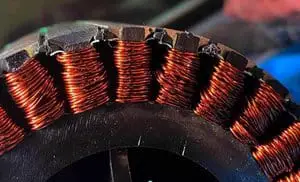
The stator within the Onewheel GTS has more windings and does use stronger magnets however the size is the same. Future Motion did not increase the thickness of the axle leaving it prone to the similar concerns on the GT.
Inside the hub, you will see the curved neodymium magnets however it is a very subtle and almost unnoticeable curve. They are stronger which provides for a better magnetic flux.
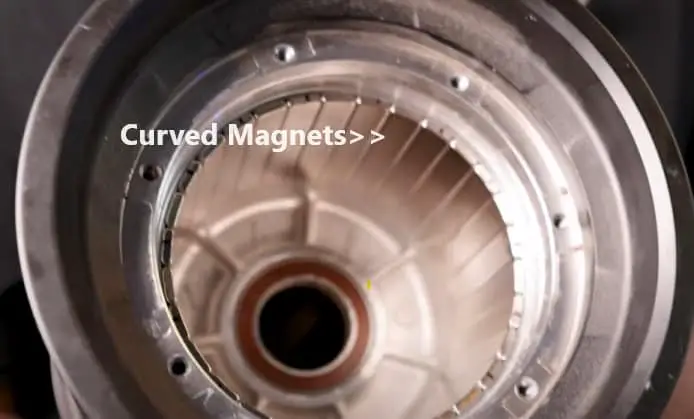
The curvature of these neodymium magnets in the motor’s design is often subtle but purposeful. It helps align the magnetic field more effectively with the stator windings, improving the motor’s efficiency and torque. The magnetic flux is improved because of the strength of the magnets
Stronger magnets, like neodymium, can produce a more substantial magnetic flux. This is because the interaction between the magnetic field (from the magnets) and the electric current (in the stator windings) is what produces the rotational force in the motor.
Curved Magnets for Efficiency and Performance: The use of neodymium magnets and the specific design of the curved magnet arrangement are aimed at increasing the efficiency and performance of the motor. Higher torque, better response, and greater overall efficiency from the new arrangement is what you will expect.
The Performance Treaded 7″ Tire (A.K.A. the S-Line Tire)
Onewheel GTS (S-Series) will be the first Onewheel to come with a performance treaded tire. This is Future Motion’s proprietary 6.5″ hub tire covering a 7″ base. This is the widest tire to date. Much criticism from the Onewheel community came when Future Motion Launched the Onewheel GT with a 6.5″ hub in comparison to their prior 6″ hub that was used on the models Prior.
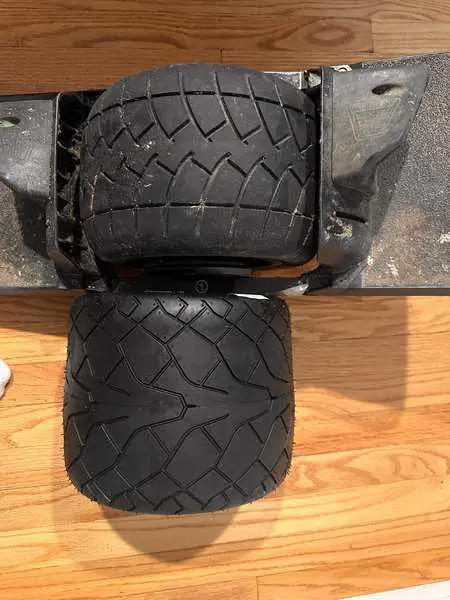
This matters because first, the 6″ hub is a standard Go-kart size and finding tires for your Onewheel was easier. More importantly however when the change was made to go to 6.5″ from a 6″ hub, The sidewall height was cut down and taken over by the hub. Sidewalls give the board a little built-in suspensions. Many riders have been critical stating that the 6.5″ hub rides stiffer than the prior 6″.
TheFloatLife has aftermarket hubs MTE 5″ which takes this problem and gives plenty of added suspension by going beyond 6″ into a 5″ hub allowing for far greater sidewall suspension.
The Performance Tire however is a softer compound over the stock treaded tire found on the Onewheel GT. It also has a flatter base which has more of that XR Vega tire feel to it. With the added half inch width, hubs are more protected, ride stability is improved and carve-ability soars as the treading covers deep into the shoulder of the tire.
Fog Lights For GT S-Series
For the first time ever, Onewheel has added Fog Lights to the Onewheel GTS. These are a hidden feature (easter egg if you will) that change your headlights to a yellow color. Yellow fog lights have traditionally been favored for their potential to reduce glare and improve visibility in foggy conditions. They have a better contrast in a foggy situation over white headlights.
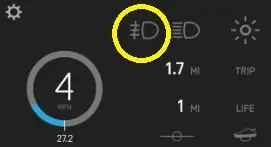
The Fog light option on is within the Onewheel App and is only available for the GT S-Series. This toggle allows you to swap to the yellow tint making you far more visible in foggy situations.
Increased Max Speed and Torque – Improved Preset Digital Shaping
With an improved S-tuned 113V Hypercore motor, the GT S-Series elevates Onewheel with massive 25% increases in max speeds within Flow, Highline, Elevated and Apex digital shaping modes. A dramatic improvement in torque will be felt throughout all modes.
Bay (S) Digital Shaping
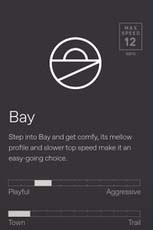
Bay (S) remains to be for new riders or trick riding. Bay (S) mode is really intended for pavement only. This mode generally is for learning to balance on the Onewheel and for beginner riders.
Once balancing and general maneuvering is achieved, another mode is recommended for daily riding. Please use caution when accelerating. You may hear haptic buzz far sooner while riding (about 10 mph). This is due to the lowered max speed. Do not exceed or you risk nosediving.
Roam (S) Digital Shaping
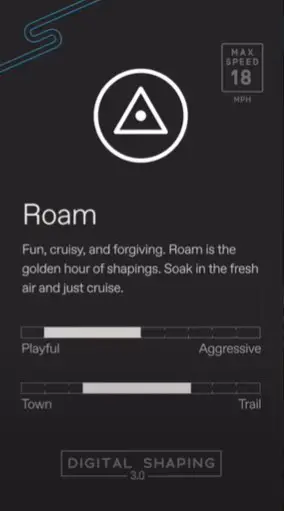
The Roam (S) shaping mode on the Onewheel GT S-Series is characterized as an intermediate option. Described by Future Motion as both playful and mellow, it represents the mid-range setting for this device. In this mode, the Onewheel GT S-Series offers a balance between responsiveness and a relaxed ride, not being as quick to react as the higher settings, yet maintaining a degree of looseness.
Additionally, it’s crucial to note the maximum speed limit in Roam mode, which is capped at 18 mph. This speed is generally sufficient for many riders. However, if you hear or feel haptic buzz from the Onewheel GTS, it’s an indication that you’re nearing this maximum speed limit. In such cases, it might be advisable to switch to a more advanced mode to accommodate higher speeds.
Flow (S) Digital Shaping
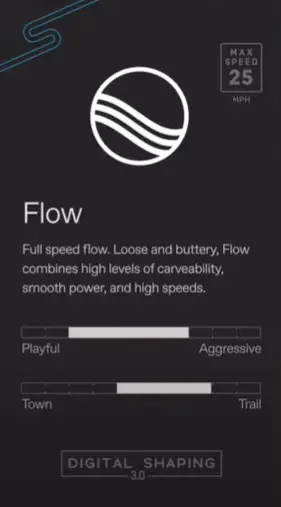
As seen on the GT, Flow for GTS retains the same mid-level setting while providing a new max speed of 25 mph (40 kph). Future Motion describes this setting as a loose, fluid digital shaping setting. This digital shaping setting does some play in the nose. Flow is the most popular preset as it is a good all-around setting. Its not as loose as Roam but allows for a moderate amount of slack in the responsiveness of the controller giving that fluid feel.
Flow is great for getting into the carving. You can achieve tighter cutbacks and carving within this setting. This setting is still relatively mellow. (Preferred trail riding setting)
Highline (S) Digital Shaping
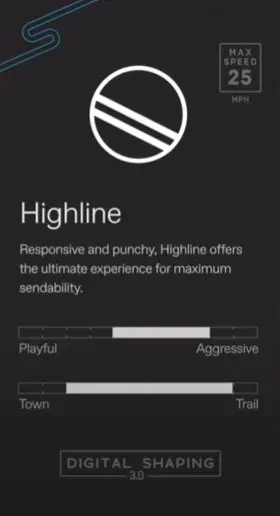
Highline (S) setting allows for great carve-ability, as its more responsive with the balancing but not too aggressive. This is perfect for riders who want a slightly tighter setting than Flow. Highline also provides a more “locked in”, tighter and more responsive feel than all prior settings.
This and Flow are ideal trail riding settings. It is in my opinion that Flow and Highline are the better trail settings as they can soften a bumpy trail. Being less responsive than Apex (S), Highline does a good job finding a middle ground in balancing on rough terrain. Apex setting will tend to be very tight and tries too hard to balance causing some tire slipping whereas Highline smooths the riding experience on tougher trails.
Apex (S) Digital Shaping
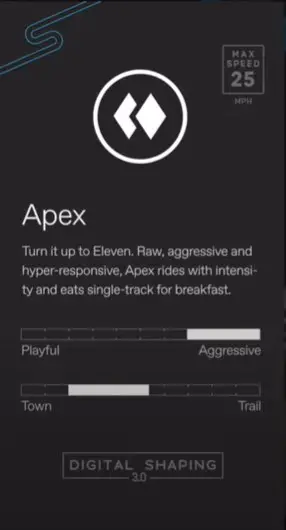
Apex (S) digital shaping is full aggressiveness in the Onewheel’s balancing. It is extremely responsive providing for the tightest feeling when carving and maneuvering on the board. This setting does not have much play in the nose. In Apex (S) mode, the Onewheel will be responsive in that you feel very “locked-in” to the ride.
Because of how “tight” the controller is set, this setting will spend a good deal attempting to balance. On chunky terrain, you may experience more ‘wheelslip warnings‘ on the app more-so than any other setting. If the tire slip warning is reoccurring on trails, try Highline or Flow digital shaping modes. Highline and Flow’s controller setting is not as extreme and will soften a chunky terrain while keeping the max potential speed of the Onewheel GT-S. This setting is great for more power on asphalt and light terrain.
Lowboy Foot Pads – Out of the Box Lowered Stance
Lowboy foot pads are standard on the Onewheel GT S-Series. On the original GT, there is a lot of plastic buildup on the underside of the footpad.
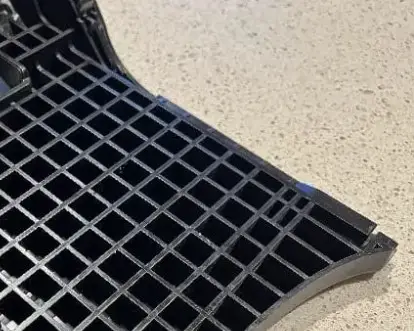
The structure of the original foot pads (seen in the image) are really an unnecessary build-up that increases the ride height.
The Lowboy pads essentially remove all of the under-structure to reduce the ride height by approximately 5mm. This subtle lowering is minor however it can be felt.
Locking XT-60 Connectors
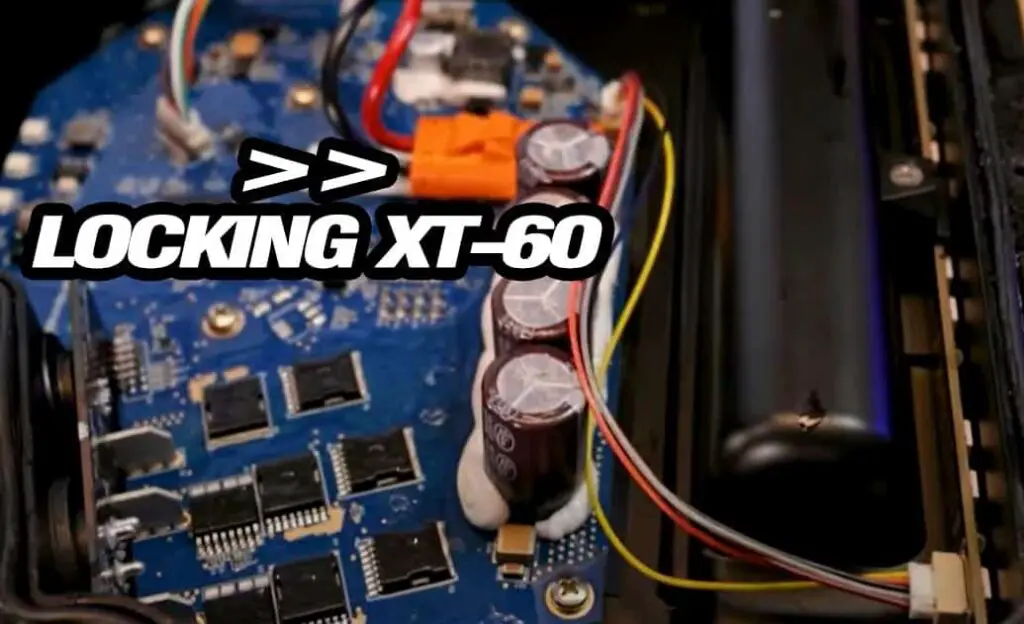
On the original GT Onewheel, common complaints were that the XT60 would wiggle loose within the battery and controller housing boxes.
On the GT-S Series, Future motion has fixed this problem within the controller box by upgrading the prior yellow connectors with Orange XT60 connectors that come with a locking clip. There is no longer a need to purchase aftermarket clips to secure this issue on the GT-S.
Improved BMS for GTS
The Battery Management System (BMS) on the Onewheel GT-S has been completely revamped to accommodate better thermal management and to handle the higher voltage. The BMS within the GT S-Series is quite large and rests on the removed batteries from the battery pack to accommodate its size.
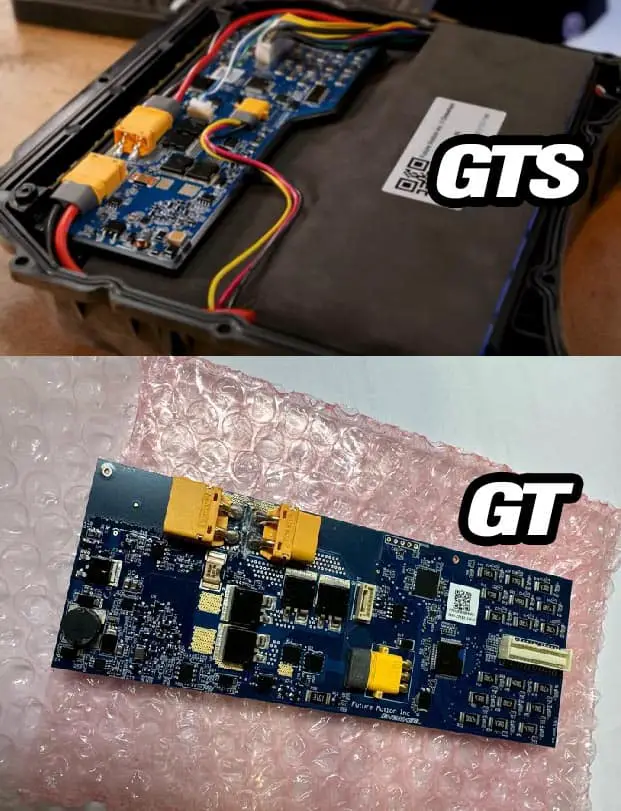
The bidirectional BMS communication is currently the one major perk of a Future Motion Onewheel. VESC builds do not typically have bidirectional battery management systems.
A 2-way BMS actively manages both the charging and discharging processes of the battery. This means it not only performs all the functions of a 1-way (unidirectional) BMS during charging but also provides similar monitoring and protection during discharge. This can include preventing over-discharge, managing discharge rates to protect the battery cells, and ensuring the battery operates within safe temperature ranges during both charging and discharging.
Smaller But Higher Voltage Battery
To achieve the high 113 volts, the GT-S battery is a high-capacity Nickel Manganese Cobalt (NMC) lithium-ion battery pack with a total energy capacity of 437 watt-hours.
This battery’s configuration is 27s1p, meaning it has 27 cells connected in series (27s) and a single layer of cells in parallel (1p). This series arrangement results in a high total voltage of up to 113 volts. This is essentially how the GT S-Series reduces the GT weight by 2lbs. They have removed 9 cells and went with 21700-sized cells, which are larger and have a higher capacity. The series arrangement is essentially the main difference in how the GT S-Series gets its power.
